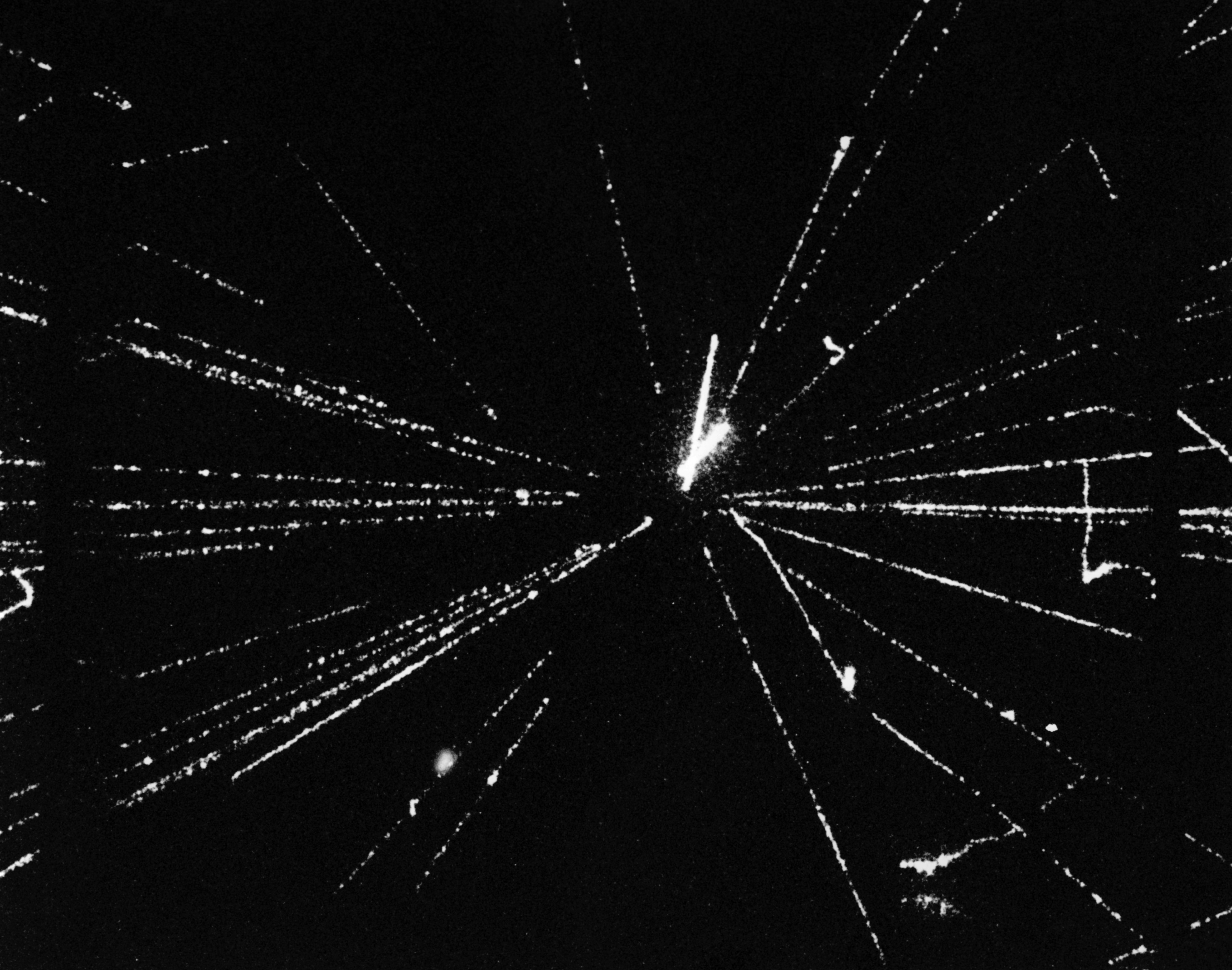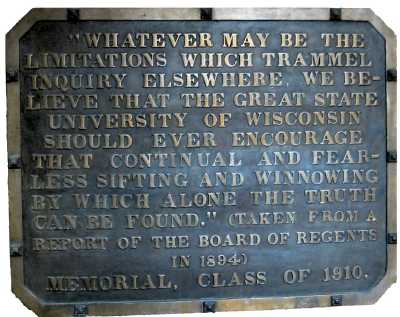|
ProtoDUNE
The ProtoDUNE experiment is a prototype for DUNE in development by CERN, which will measure neutrino interactions with target atoms. DUNE will use a liquid-argon time projection chamber as a target for these neutrinos, also known as a LArTPC. Neutrino collisions knock electrons off of atoms in the LArTPC and release light energy, both of which can be measured by ProtoDUNE. Scientists use a negatively-charged anode plane array (APA) to attract and record the path of the electrons, thereby recording information about the collision itself. The ProtoDUNE detector is around the size of a three-storey house, and the DUNE project will use modules twenty times the size of ProtoDUNE. ProtoDUNE was successfully tested in 2018; as of 2023 it is the largest LArTPC ever constructed. Two detectors have been built at the neutrino platform, each containing around 800 metric tons of liquid argon. A cryostat is used to insulate the detector, which needs to be kept at temperatures of -184°C (-300°F ... [...More Info...] [...Related Items...] OR: [Wikipedia] [Google] [Baidu] |
Deep Underground Neutrino Experiment
The Deep Underground Neutrino Experiment (DUNE) is a neutrino experiment under construction, with a near detector at Fermilab and a far detector at the Sanford Underground Research Facility that will observe neutrinos produced at Fermilab. An intense beam of trillions of neutrinos from the production facility at Fermilab (in Illinois) will be sent over a distance of with the goal of understanding the role of neutrinos in the universe. More than 1,000 collaborators work on the project. The experiment is designed for a 20-year period of data collection. The primary science objectives of DUNE are *Investigation of neutrino oscillations to test CP violation in the lepton sector, which explores why the universe is made of matter. *Determination of the ordering of the neutrino masses. *Studies of supernovae and the formation of a neutron star or black hole, even though the detector is deep underground with no direct view of the sky. *Search for proton decay, which has never been obse ... [...More Info...] [...Related Items...] OR: [Wikipedia] [Google] [Baidu] |
CERN Experiments
The European Organization for Nuclear Research, known as CERN (; ; ), is an intergovernmental organization that operates the largest particle physics laboratory in the world. Established in 1954, it is based in Meyrin, western suburb of Geneva, on the France–Switzerland border. It comprises 24 member states. Israel, admitted in 2013, is the only full member geographically out of Europe. CERN is an official United Nations General Assembly observer. The acronym CERN is also used to refer to the laboratory; in 2023, it had 2,666 scientific, technical, and administrative staff members, and hosted about 12,370 users from institutions in more than 80 countries. In 2016, CERN generated 49 petabytes of data. CERN's main function is to provide the particle accelerators and other infrastructure needed for high-energy physics research – consequently, numerous experiments have been constructed at CERN through international collaborations. CERN is the site of the Large Hadron Collid ... [...More Info...] [...Related Items...] OR: [Wikipedia] [Google] [Baidu] |
Super Proton Synchrotron
The Super Proton Synchrotron (SPS) is a particle accelerator of the synchrotron type at CERN. It is housed in a circular tunnel, in circumference, straddling the border of France and Switzerland near Geneva, Switzerland. History The SPS was designed by a team led by John Adams (physicist), John Adams, List of Directors General of CERN, director-general of what was then known as Laboratory II. Originally specified as a 300 GeV accelerator, the SPS was actually built to be capable of 400 GeV, an operating energy it achieved on the official commissioning date of 17 June 1976. However, by that time, this energy had been exceeded by Fermilab, which reached an energy of 500 GeV on 14 May of that year. The SPS has been used to accelerate protons and antiprotons, electrons and positrons (for use as the injector for the Large Electron–Positron Collider (LEP)), and quark–gluon plasma, heavy ions. From 1981 to 1991, the SPS operated as a hadron (more precisely, proton–an ... [...More Info...] [...Related Items...] OR: [Wikipedia] [Google] [Baidu] |
Proton
A proton is a stable subatomic particle, symbol , Hydron (chemistry), H+, or 1H+ with a positive electric charge of +1 ''e'' (elementary charge). Its mass is slightly less than the mass of a neutron and approximately times the mass of an electron (the proton-to-electron mass ratio). Protons and neutrons, each with a mass of approximately one Dalton (unit), dalton, are jointly referred to as ''nucleons'' (particles present in atomic nuclei). One or more protons are present in the Atomic nucleus, nucleus of every atom. They provide the attractive electrostatic central force which binds the atomic electrons. The number of protons in the nucleus is the defining property of an element, and is referred to as the atomic number (represented by the symbol ''Z''). Since each chemical element, element is identified by the number of protons in its nucleus, each element has its own atomic number, which determines the number of atomic electrons and consequently the chemical characteristi ... [...More Info...] [...Related Items...] OR: [Wikipedia] [Google] [Baidu] |
Lawrence Berkeley National Laboratory
Lawrence Berkeley National Laboratory (LBNL, Berkeley Lab) is a Federally funded research and development centers, federally funded research and development center in the Berkeley Hills, hills of Berkeley, California, United States. Established in 1931 by the University of California (UC), the laboratory is sponsored by the United States Department of Energy and administered by the UC system. Ernest Lawrence, who won the Nobel prize for inventing the cyclotron, founded the lab and served as its director until his death in 1958. Located in the Berkeley Hills, the lab overlooks the campus of the University of California, Berkeley. Scientific research The mission of Berkeley Lab is to bring science solutions to the world. The research at Berkeley Lab has four main themes: discovery science, energy, earth systems, and the future of science. The Laboratory's 22 scientific divisions are organized within six areas of research: Computing Sciences, Physical Sciences, Earth and Environmenta ... [...More Info...] [...Related Items...] OR: [Wikipedia] [Google] [Baidu] |
United States Department Of Energy
The United States Department of Energy (DOE) is an executive department of the U.S. federal government that oversees U.S. national energy policy and energy production, the research and development of nuclear power, the military's nuclear weapons program, nuclear reactor production for the United States Navy, energy-related research, and energy conservation. The DOE was created in 1977 in the aftermath of the 1973 oil crisis. It sponsors more physical science research than any other U.S. federal agency, the majority of which is conducted through its system of National Laboratories. The DOE also directs research in genomics, with the Human Genome Project originating from a DOE initiative. The department is headed by the secretary of energy, who reports directly to the president of the United States and is a member of the Cabinet. The current secretary of energy is Chris Wright, who has served in the position since February 2025. The department's headquarters are in sou ... [...More Info...] [...Related Items...] OR: [Wikipedia] [Google] [Baidu] |
Daresbury Laboratory
Daresbury Laboratory is a scientific research laboratory based at Sci-Tech Daresbury campus near Daresbury in Halton, Cheshire, England. The laboratory began operations in 1962 and was officially opened on 16 June 1967 as the Daresbury Nuclear Physics Laboratory (DNPL) by the then Prime Minister of United Kingdom, Harold Wilson. It was the second national laboratory established by the British National Institute for Research in Nuclear Science, following the Rutherford High Energy Laboratory (now Rutherford Appleton Laboratory). It is operated by the Science and Technology Facilities Council, part of UK Research and Innovation. As of 2018, it employs around 300 staff, with Paul Vernon appointed as director in November 2020, taking over from Professor Susan Smith who had been director from 2012. Description Daresbury Laboratory carries out research in fields such as accelerator science, bio-medicine, physics, chemistry, materials, engineering and computational science. Its fa ... [...More Info...] [...Related Items...] OR: [Wikipedia] [Google] [Baidu] |
Science And Technology Facilities Council
The Science and Technology Facilities Council (STFC) is a United Kingdom government agency that carries out research in science and engineering, and funds UK research in areas including particle physics, nuclear physics, space science and astronomy (both ground-based and space-based). History STFC was formed in April 2007 when the Particle Physics and Astronomy Research Council (PPARC), the Council for the Central Laboratory of the Research Councils (CCLRC), along with the nuclear physics activities of the Engineering and Physical Sciences Research Council (EPSRC) were brought under the one Umbrella organization, umbrella organisation. The organisation's first Chief Executive was Professor Keith Mason, who held the position until 2011, when he was replaced by Professor John Womersley. Womersley was the CEO until 2016 when he left to become Director General of the European Spallation Source. Dr Brian Bowsher, former CEO of the National Physical Laboratory and member of STFC's ... [...More Info...] [...Related Items...] OR: [Wikipedia] [Google] [Baidu] |
University Of Wisconsin–Madison
The University of Wisconsin–Madison (University of Wisconsin, Wisconsin, UW, UW–Madison, or simply Madison) is a public land-grant research university in Madison, Wisconsin, United States. It was founded in 1848 when Wisconsin achieved statehood and is the flagship campus of the University of Wisconsin System. The main campus is located on the shores of Lake Mendota; the university also owns and operates a arboretum south of the main campus. UW–Madison is organized into 13 schools and colleges, which enrolled approximately 34,200 undergraduate and 14,300 graduate and professional students in 2024. Its academic programs include 136 undergraduate majors, 148 master's degree programs, and 120 doctoral programs. Wisconsin is one of the founding members of the Association of American Universities. It is considered a Public Ivy and is classified as an R1 University. UW–Madison was also the home of both the prominent "Wisconsin School" of economics and diplomatic h ... [...More Info...] [...Related Items...] OR: [Wikipedia] [Google] [Baidu] |
Cryostat
A cryostat (from ''cryo'' meaning cold and ''stat'' meaning stable) is a device used to maintain low cryogenic temperatures of samples or devices mounted within the cryostat. Low temperatures may be maintained within a cryostat by using various refrigeration methods, most commonly using cryogenic fluid bath such as liquid helium.Frank Pobell: ''Matter and Methods at Low Temperatures''. 3rd Edition, Springer 2007, Hence it is usually assembled into a vessel, similar in construction to a vacuum flask or Dewar. Cryostats have numerous applications within science, engineering, and medicine. Types Closed-cycle cryostats Closed-cycle cryostats consist of a chamber through which cold helium vapour is pumped. An external mechanical refrigerator extracts the warmer helium exhaust vapour, which is cooled and recycled. Closed-cycle cryostats consume a relatively large amount of electrical power, but need not be refilled with helium and can run continuously for an indefinite perio ... [...More Info...] [...Related Items...] OR: [Wikipedia] [Google] [Baidu] |
Anode
An anode usually is an electrode of a polarized electrical device through which conventional current enters the device. This contrasts with a cathode, which is usually an electrode of the device through which conventional current leaves the device. A common mnemonic is ACID, for "anode current into device". The direction of conventional current (the flow of positive charges) in a circuit is opposite to the direction of electron flow, so (negatively charged) electrons flow from the anode of a galvanic cell, into an outside or external circuit connected to the cell. For example, the end of a household battery marked with a "+" is the cathode (while discharging). In both a galvanic cell and an electrolytic cell, the anode is the electrode at which the oxidation reaction occurs. In a galvanic cell the anode is the wire or plate having excess negative charge as a result of the oxidation reaction. In an electrolytic cell, the anode is the wire or plate upon which excess positive charge ... [...More Info...] [...Related Items...] OR: [Wikipedia] [Google] [Baidu] |









